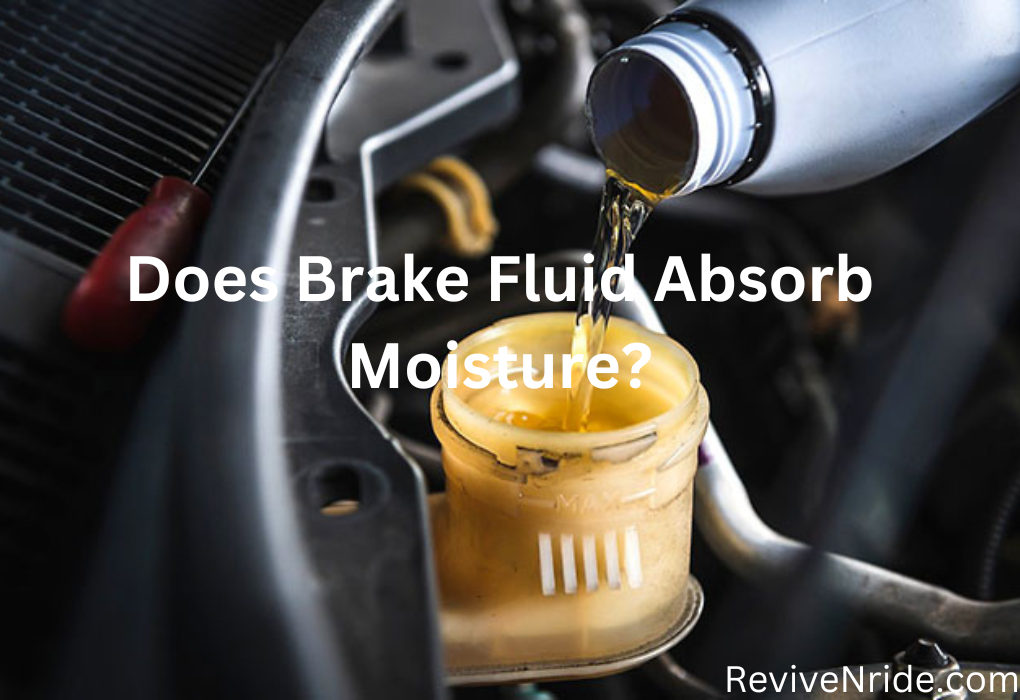“Yes, brake fluid is hygroscopic, which means it attracts and absorbs moisture from the air. This moisture absorption is a major concern for your braking system’s safety and performance..”
Why Does Brake Fluid Absorb Moisture?
Brake fluid, the essential hydraulic fluid in your car’s braking system, possesses a critical property called hygroscopicity, meaning it readily attracts and absorbs water vapor from the surrounding air.
This hygroscopic nature stems from the chemical composition of brake fluid, particularly the use of glycol ether as a base component in common DOT 3 and DOT 4 fluids.
These molecules have a strong affinity for water molecules, causing the fluid to absorb moisture over time.
Even minimal exposure during routine maintenance or top-offs can introduce moisture.
While all DOT classifications (like DOT 3, DOT 4, and DOT 5) are hygroscopic, their chemical makeup can slightly influence absorption rates.
For instance, DOT 5 silicone-based fluid has a lower attraction to water compared to glycol ether fluids, but it’s not widely used due to compatibility issues.
After a year in service, brake fluid can absorb approximately 2% of moisture.
This might seem like a small amount, but it can seriously impact the fluid’s performance.
However, the key takeaway is that regardless of the DOT classification, all commonly used brake fluids will absorb moisture over time.
This moisture contamination affects the fluid’s performance, particularly its boiling point.
To see a visual demonstration of how brake fluid absorbs moisture, you can watch this YouTube video:
How Does Moisture Affect Brake Fluid?
Moisture contamination is the primary concern for brake fluid due to its hygroscopic nature.
While minimal entry may occur over time, significant contamination can happen during fluid changes without proper procedures or through degraded seals and hoses.
The absorbed moisture disrupts the braking system’s functionality in two key ways:
- Decreased Boiling Point
Brake fluid is engineered to withstand the high temperatures generated during braking, often exceeding 400°F (204°C).
However, water has a much lower boiling point, around 212°F (100°C).
When moisture contaminates the brake fluid, the resulting mixture experiences a significant reduction in boiling point.
This becomes problematic because, under heavy braking, the system generates extreme heat.
If the boiling point is surpassed, the absorbed water boils and forms vapor bubbles.
- Vapor Lock Formation
These vapor bubbles are compressible, unlike brake fluid.
They can be compressed under the pressure exerted by pressing the brake pedal.
With vapor bubbles present, the force applied to the brake pedal doesn’t translate fully to the braking system.
This results in a spongy pedal feel and a decrease in overall braking effectiveness, compromising vehicle safety.
In extreme scenarios, with significant moisture contamination and intense heat, the vapor bubbles can crush the entire system.
This leads to a condition called brake fade, where the brakes become progressively less effective even when the pedal is firmly pressed.
Signs That You Might Need A Brake Fluid Change
Here are some warning signs that might indicate your brake fluid needs a change, based on the expertise of qualified mechanics:
- Spongy Brake Pedal: When you press the brake pedal, it feels soft and mushy instead of firm and responsive.
This can happen because vapor bubbles in the hygroscopic brake fluid compress under pressure, reducing braking effectiveness.
Imagine pushing down on a marshmallow instead of a solid button, that’s what a spongy brake pedal feels like.
Safety Note: According to the National Highway Traffic Safety Administration (NHTSA), a compromised brake system can seriously increase stopping distances and put you at risk of a collision.
- Increased Pedal Travel Distance: You have to press the brake pedal much further down than usual to slow down the car.
This is another consequence of air or vapor bubbles in the compromised brake fluid.
Think about it this way, if you usually brake by pressing the pedal halfway down, and suddenly you need to press it down with more force to achieve the same stopping power, that’s a red flag.
- Uneven Braking: The car pulls to one side when you apply the brakes.
This can be caused by a variety of issues, but moisture contamination in the brake fluid can be responsible.
If your car seems to be drifting to the left or right when you brake, it’s important to get it checked by a qualified mechanic as soon as possible.
- Grinding Noises: Unusual grinding noises coming from the brakes when applied could indicate worn brake pads or rotors.
However, it can also be a sign of air or moisture in the brake fluid causing excessive wear.
While grinding noises can point to other issues, they shouldn’t be ignored, especially if they appear alongside other warning signs on this list.
- Warning Light Illumination: Modern cars often have a dashboard brake warning light that illuminates when the system detects a problem.
This could be due to low brake fluid levels, which can be a symptom of moisture contamination.
If your brake warning light comes on, don’t hesitate to pull over to a safe location and consult your car’s manual or seek professional help immediately.
How Often Should I Change My Brake Fluid?
Your car’s owner’s manual provides the manufacturer’s recommended brake fluid change interval (typically 2-4 years or 40,000-60,000 miles).
However, factors like driving conditions, climate, and vehicle type can influence this.
For a personalized recommendation, consult a qualified mechanic.
They can inspect your brake fluid’s moisture content and tailor a service schedule to your specific needs.
